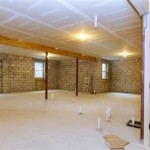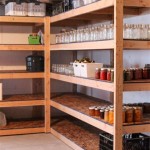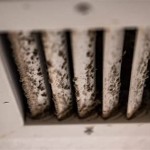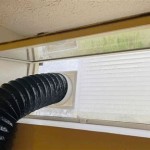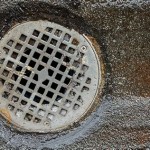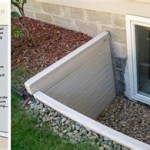Basement Insulation And Vapor Barrier
A basement is a valuable space in any home, but it can also be a source of moisture and heat loss. To make your basement more comfortable and energy-efficient, it's important to insulate it properly and to install a vapor barrier.
Insulation
Insulation helps to keep your basement warm in the winter and cool in the summer. It can also help to reduce noise levels and improve the air quality in your home.
There are several different types of insulation that can be used in a basement, including fiberglass batts, rigid foam boards, and spray foam. Fiberglass batts are the most common type of insulation, and they are relatively inexpensive and easy to install. Rigid foam boards are more expensive than fiberglass batts, but they are also more durable and provide better insulation value.
Spray foam is the most expensive type of insulation, but it also provides the best insulation value and air sealing. Spray foam can be applied to any surface, and it conforms to the shape of the surface, which helps to eliminate air leaks.
When choosing insulation for your basement, it's important to consider the R-value of the insulation. The R-value measures the resistance of the insulation to heat flow. The higher the R-value, the better the insulation.
For basements, it is recommended to use insulation with an R-value of at least R-13. However, if you live in a cold climate, you may want to use insulation with a higher R-value.
Vapor Barrier
A vapor barrier is a material that prevents moisture from passing through it. Vapor barriers are used in basements to prevent moisture from entering the basement from the ground or from the air. Moisture can cause damage to the basement walls and floor, and it can also create a musty smell and promote the growth of mold and mildew.
There are several different types of vapor barriers that can be used in a basement, including polyethylene sheeting, vapor barrier paint, and vapor barrier membranes.
Polyethylene sheeting is the most common type of vapor barrier. It is inexpensive and easy to install. Vapor barrier paint is a paint that is applied to the walls and floor of the basement. It is more expensive than polyethylene sheeting, but it is also more durable.
Vapor barrier membranes are a type of vapor barrier that is installed between the insulation and the drywall. Vapor barrier membranes are the most expensive type of vapor barrier, but they are also the most effective.
When choosing a vapor barrier for your basement, it's important to consider the climate you live in and the moisture levels in your basement. If you live in a humid climate or if your basement is prone to flooding, you may want to use a more expensive vapor barrier, such as a vapor barrier membrane.
Installing Insulation And A Vapor Barrier
Installing insulation and a vapor barrier in your basement is a relatively simple process. However, it's important to follow the manufacturer's instructions carefully to ensure that the insulation and vapor barrier are installed properly.
To install insulation, you will need to first determine the R-value of the insulation you need. Once you have determined the R-value, you can cut the insulation to the appropriate size and install it in the basement walls and ceiling.
Once the insulation is installed, you can install the vapor barrier. To install a polyethylene sheeting vapor barrier, you will need to overlap the sheets by at least 6 inches and tape the seams with duct tape.
To install a vapor barrier paint, you will need to apply the paint to the walls and floor of the basement. Be sure to follow the manufacturer's instructions carefully.
To install a vapor barrier membrane, you will need to install the membrane between the insulation and the drywall. Be sure to follow the manufacturer's instructions carefully.
Once the insulation and vapor barrier are installed, you can finish the basement as desired.
Insulating your basement and installing a vapor barrier are two of the best ways to improve the comfort and energy efficiency of your home.

Bsd 103 Understanding Basements Buildingscience Com

Keeping The Heat In Section 6 Basement Insulation Floors Walls And Crawl Spaces

Solid Foundations For Modern Construction Exploring Three Superior Basement Insulation Methods News

Basement Vapor Barrier Insulation Issues

How Should I Finish An Existing Basement Wall Jlc Online

Solid Foundations For Modern Construction Exploring Three Superior Basement Insulation Methods News

The Ugly Truth About Basement Vapor Barriers Youtube

How To Install A Basement Vapor Barrier Hgtv

Should I Run Vapor Barrier Across The Ceiling In A Basement Home Improvement Stack Exchange

Basement Blanket Insulation Building America Solution Center
Related Posts
